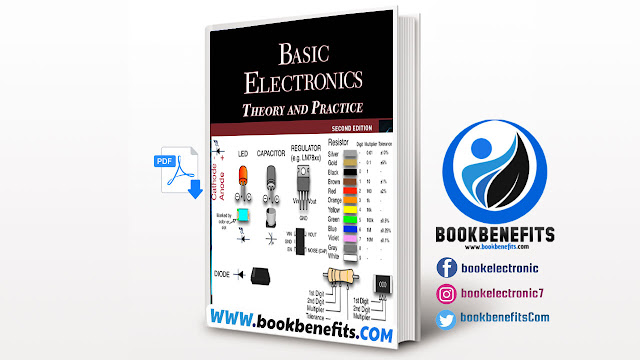Download Basic Electronics: Theory and Practice PDF
Basic ElectronicsThe studies of electronics can be a little overwhelming when you start out. But without assuming that you remember everything from your general science classes, we take you through it all step by step so that you will gain confidence in your understanding of the material. This doesn’t mean that we give you an oversimplified version of electronics, but it does mean that we cover the topics in a more digestible style. We believe that by making the effort to wrap your head around some of the more difficult topics, you will find it easier to progress into further study of electronic theory or hands-on experimentation. We believe that a new revolution is underway. Electronics has always had a thriving hobbyist population, especially in the 1960s and the 1970s. There were magazines, corner electronics stores; and clubs where enthusiasts could meet and share their creations. It had its subcultures from amateur radio enthusiasts to model rocket builders. In the 1980s, this culture grew to include people building personal computers before companies such as IBM and Apple began to mass produce them. The hobbyist field changed as electronics advanced. The increasing sophistication and miniaturization of electronic components and the products built with them made hobbyist-built electronics pale in comparison to their flashier, mass-produced competition. But those same advances are now putting the design and production back into the hobbyists’ hands. Perhaps egged on by battling robots out of university engineering departments, a new generation of electronics buffs is tinkering with technology. With affordable microcontrollers and a wide range of products and information available online, the hobbyist can design and build machines that recharge the ideas of homebrew and do-it-yourself. We can all become Make.
How This Book Is Organized
Part 1: The Fundamentals covers electronics basics from the atoms up. You learn about currents, AC and DC voltage, and find out how they all work together to power our world.
Part 2: Your Workspace and Tools introduces the tools of the trade, from the low-tech soldering iron that makes your connections to the high-tech digital multimeter, and offers advice for setting up a shop and working with electricity safely.
Part 3: Electronic Components gives you the nitty-gritty of circuits, capacitors, diodes, transistors, and power supplies. These components are the workhorses of electronics, keeping things powered, amped up, and running smoothly.
Part 4: Getting to Work keeps you busy soldering parts together and creating your own power supply. Once you have these skills under your belt, you’re ready to start building—and inventing—your own electronic devices.
Part 5: Going Digital teaches you to think like a computer. You learn how integrated circuits put digital signals to work and how to use memory to store the instructions that run your gadgets.
Part 6: Electronics in Practice covers motors and controllers, sensors, and electronic communication. Part 7: Constructing a Robot (covering both Arduino and Netduino) helps you use everything you learned from the previous parts to create your own robot—one that can move on its own and sense its environment. We then introduce the Raspberry Pi to give you the option to connect a small computer to your electronics projects. What will you build next?
Contents Of The Book :
Part 1: The Fundamentals
Chapter 1: The Theory Behind Electricity
Chapter 2: How Electricity Works
Chapter 3: Currents and Circuits
Part 2: Your Workspace and Tools
Chapter 4: Tools of the Trade
Chapter 5: Shop Setup and Safety
Part 3: Electronic Components
Chapter 6: Switches
Chapter 7: Resistors
Chapter 8: Capacitors
Chapter 9: Diodes
Chapter 10: Transistors
Chapter 11: Power Sources and Power Supplies
Part 4: Getting to Work
Chapter 12: Soldering
Chapter 13: Constructing a Power Supply
Part 5: Going DigiPart 7: Constructing a Robot and Using Raspberry Pi
Chapter 21A: Arduino: Building Your Robot
Chapter 21B: Netduino: Building Your Robot
Chapter 22A: Arduino: Getting Your Robot Moving
Chapter 22B: Netduino: Getting Your Robot Moving
Chapter 23A: Arduino: Adding Sensors to Your Robot
Chapter 23B: Netduino: Adding Sensors to Your Robot
Chapter 24: Using Raspberry Pi in Your Electronics Projects
Appendix A: Glossary
Appendix B: Timeline of Electronics
Appendix C: Mathematics for Electronics
Appendix D: Careers in Electronics
Appendix E: Resources
Appendix F: Answers for Odd-Numbered Questions
Appendix G: Lab Video Directory
Information Of The Book :
Title: Basic Electronics: Theory and Practice PDF
Language: English.
Size: 6,61 MB
Pages: 357
Year : 2017
Format: PDF
Author : by S. Westcott & J. R. Westcott

